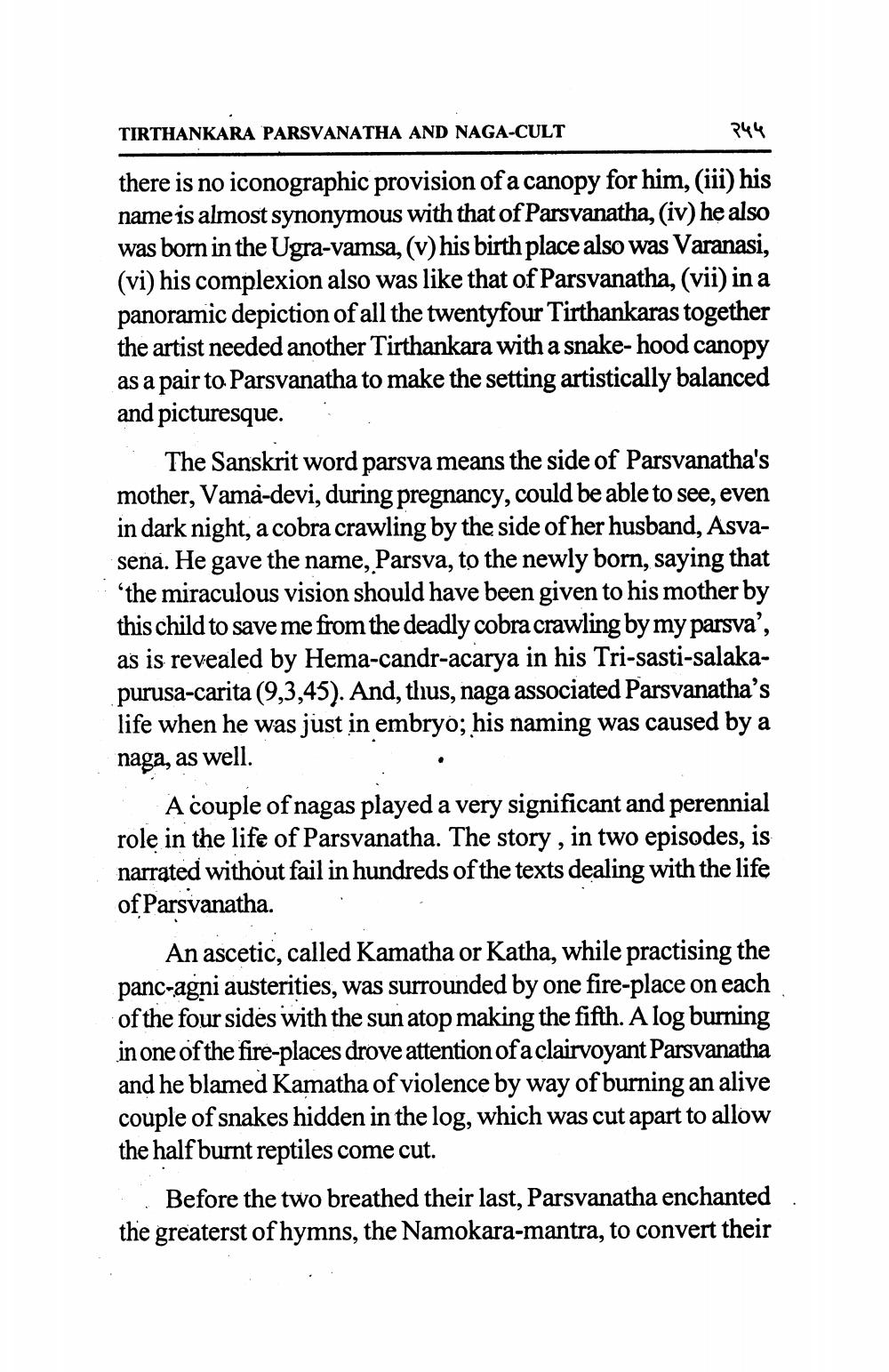________________
TIRTHANKARA PARSVANATHA AND NAGA-CULT
२५५
there is no iconographic provision of a canopy for him, (iii) his name is almost synonymous with that of Parsvanatha, (iv) he also was born in the Ugra-vamsa, (v) his birth place also was Varanasi, (vi) his complexion also was like that of Parsvanatha, (vii) in a panoramic depiction of all the twentyfour Tirthankaras together the artist needed another Tirthankara with a snake-hood canopy as a pair to Parsvanatha to make the setting artistically balanced and picturesque.
The Sanskrit word parsva means the side of Parsvanatha's mother, Vama-devi, during pregnancy, could be able to see, even in dark night, a cobra crawling by the side of her husband, Asvasena. He gave the name, Parsva, to the newly born, saying that "the miraculous vision should have been given to his mother by this child to save me from the deadly cobra crawling by my parsva', as is revealed by Hema-candr-acarya in his Tri-sasti-salakapurusa-carita (9,3,45). And, thus, naga associated Parsvanatha's life when he was just in embryo; his naming was caused by a naga, as well.
A couple of nagas played a very significant and perennial role in the life of Parsvanatha. The story , in two episodes, is narrated without fail in hundreds of the texts dealing with the life of Parsvanatha.
An ascetic, called Kamatha or Katha, while practising the panc-agni austerities, was surrounded by one fire-place on each of the four sides with the sun atop making the fifth. A log burning in one of the fire-places drove attention of a clairvoyant Parsvanatha and he blamed Kamatha of violence by way of burning an alive couple of snakes hidden in the log, which was cut apart to allow the half burnt reptiles come cut.
Before the two breathed their last, Parsvanatha enchanted the greaterst of hymns, the Namokara-mantra, to convert their




